Laser Red light therapy devices are becoming increasingly popular as a treatment option for a variety of medical conditions. What makes red and infrared light therapy so promising is the combination of wavelength and intensity that they emit. Wavelengths of red light penetrate deeper into the skin than other wavelengths, which means that they can stimulate more healing cells and activate collagen production more effectively. In addition,red led light therapy are much less expensive to operate than conventional light therapies, and their longevity is indefinite. With all these advantages, it's no wonder that 660nm 850nm deep red light are becoming the go-to choice for many medical professionals! But before you make your purchase, be sure to read our blog to learn about some important factors associated with the efficacy of different types of red light laser therapy.
The history of red light therapy light: LED technical evolution
Scientific research has proven that specific wavelengths of red and near infrared light radiation can be utilized by human bodies through the promotion of electron transport in the cellular respiration chain and mitochondiral membrane potential. The current medical indications studied in photobiomodulation research have been listed in the following picture. Since many aging-related chronic diseases share the same implications of dysfunctional mitochondria, oxidative stress, and metabolic causes, it is plausible that these diseases can be alleviated via improving the mitochondrial and antioxidant functions.

In the past, laser sources (light amplification by stimulated emission of radiation) have long been used in medical fields, which require a monochromatic and coherent beam of light with low divergence. The following picture illustrates the basic mechanisms of action of a laser source. Once the majority of electrons are in the excited state, an incoming photon will stimulate the emission of a torrent of new photons, and the light will be amplified. The initial findings of laser-based therapeutic effects aroused attention to the functions of visible red and near infrared light on human bodies. This laser-centered history of photobiomodulation becomes the basis for the assumption that some laser properties are necessary to induce the beneficial effects of red infrared lamp therapy, such as monochromaticity, coherence, collimation, or polarization. Before NASA investigated the invention of quasi-monochromatic LED sources, the first model of LED with therapeutic effects, LED light sources weren't the counterpart of laser sources.

The important advance of qusi-monochromatic LED sources is the bandwidth. The following picture illustrates how light is produced in KEDs. An electric potential applied to a semiconductor causes the separation of electrons and holes, and when they recombine in the I section, light is produced with its wavelength depending on the electron energy. The semiconductors are usually InGaN and AlInGaP. The bandwidth of laser light can be very narrow to allow a fraction of a nanometer, while the latest LEDs cantypically have 1 to 2 nm of bandwidth sufficiently narrow for therapeutic uses.

Another limitation of LED light therapy in the past was the power output. Because of the need to remove heat from the actual diode to avoid that heat being generated and excessive heat causing degradation of the semiconductors, typical LEDs only have an electrical energy efficiency of around 20 to 30%. Extra heat-sinks or cooling systems are required for further increasing the power output.
Another property of lasers is also critical to determining the effects of photobiomodulation therapy: coherence. When coherent light irradiation contacts with tissue, small imperfections of tissue structure generate "speckles" and mutual interference patterns, which are better able to stimulate mitochondria than non-coherent LED light, as indicated in this study. Though the debate exists, it appears to be that the coherence of light source isn't necessary, but can be replaced by the light absorption of the photoacceptor molecule.

When it comes to choosing the professional red light therapy devices, it's important to understand the different parameters that come into play. Wavelengths are most important to stimulate desired effects due to penetration window of human tissue and absorption ability of photoacceptor molecules. Based on a variety of experimental evidence, the most suggested wavelengths are red light at 660 nm and near infrared light at 830 nm. Irradiance must be adequate to trigger the positive process to achieve the goal, while excessively high irradiance will be transformed into heat to cancel the effects or cause damages. A prolonged treatment time for a certain level of light dose using a light source with low irradiance has a noticeable probablity of being ineffective for treatment goals, according to this study, while dosage has a more complex relation with wavelengths than you may expect. This study applied different wavelengths and each wavelength with different doses to evaluate the effect of near infrared light therapy devices for wound healing. The results showed different healing percentages corresponding to the different wavelengths and applied doses, which suggests there are different optimum doses for different wavelengths.
The advanced LED technology today makes it possible to produce LED light sources with sufficiently narrow bandwidth, adequate and efficient irradiance level, and stable monochromatic irradiation, which opens the door of LED applications in medical fields.
What types of red light therapy at home for body are available
There are a lot of LED light sources with various designs on the market. It can be difficult to know which red LED light therapy device is right for you. Not all devices are created equal, and some are better suited for treating specific skin conditions. Consult with specialists first before making a decision of purchase.
Red light therapy belt
Red light therapy pads are most suitable for healing the positions that are hard to reach, such as elbows, necks, joints. But due to the characteristics of direct contacting with skin and belt design, its irradiance levels are usually limited and lower than red light therapy panel. However, red light therapy pads bring other benefits, which make it better to treat pains in waists, limbs, spinal core, and so forth. It is more flexible and direct attachment is better for targeted treatment, including reducing inflammation, promoting blood circulation, relieving pains and soreness in muscle.

Full body red light therapy panel
Red light therapy panels can cover a larger treatment area, which is necessary in some diseases, like back pains, obesity, psoriasis, other systematic skin disorders. In addition, red light therapy panels are usually more flexible with parameters of design, and thus they can provide higher irradiance and be more adjustable for different ways of treatment, which certainly bring more worthiness to your purchase.
Red light therapy for face
Photon led face mask light therapy are professional for treating skin conditions of face. They are designated for facial needs with extra design points, such as the combination of blue light for better anti-inflammation and ance clearing-up, special irradiance for facial attachment, and so forth.

The advantages of Bestqool red light therapy devices
Looking for a home infrared light therapy that offers a variety of advantages? Look no further than Bestqool light therapy devices! These devices are much more affordable than traditional light therapies and come with many adjustable features. Plus, they're perfect for people who want to use light therapy for specific purposes, like clearing up acne or healing arthritis. There are some advantages of Bestqool devices:
- Flexibility and effectiveness. All Bestqool products are proven and supported by FDA as FDA Class Ⅱ medical devices. With our engagement in physically medical treatment areas, Bestqool is able to produce devices that are truly professional to provide clinical-grade treatments, based on the most suggested parameters of clinical reviews. You can enjoy in-office medical-grade red light body therapy, but with more flexibility and convenience to accommodate with your daily schedule.
- Cost-effectiveness and reliability. Compared with other counterparts, Bestqool minimized its cost in advertising for providing more cost-effective professional red light therapy devices. It is yet necessary to note that Bestqool provides a three-year warranty for all Bestqool red light devices, which is the longest standard in this market, so you can trust us.
- Safety standards and professional design. Bestqool highly prioritizes the safety of our clients and strictly abides by the highest safety standards of this market. Besides the most flexibility of design and modeling, all Bestqool are red light infrared therapy lamps are FDA-registered and ETL-certified, without EMFs emitting at the distance of 3 inches and potential risk of thermal damage.












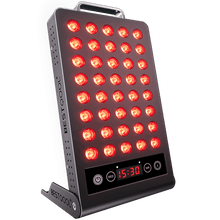
 Small
Small
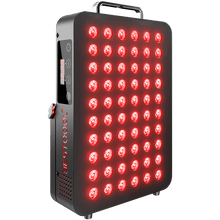
 Moderate
Moderate
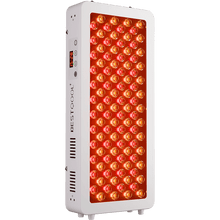
 Moderate
Moderate
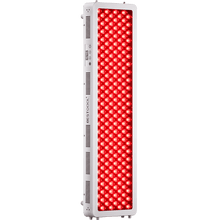
 Moderate
Moderate
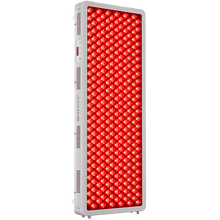
 Full
Full



